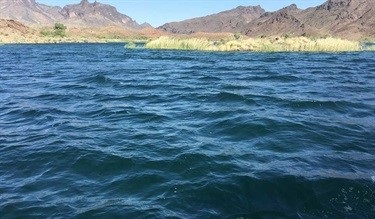Ground and Imported Water
Groundwater
Large groundwater basins lie beneath Los Angeles County and have served as natural reservoirs for storing water underground for millions of years. Groundwater is a water supply that is local, sustainable, and cost efficient.
Long Beach has groundwater wells located throughout the city and currently has water rights to pump approximately 33,000 acre-feet of groundwater per year. This amount is enough to fulfill about sixty percent of Long Beach’s water needs.
Long Beach Utilities is actively undertaking efforts to grow our groundwater resources for the future to increase sustainability and reduce dependency on imported water, which improves the resiliency of our water supply.
Imported Water
The rest of the water supply in Long Beach (about forty percent) comes from imported sources originating hundreds of miles away. The two main imported water sources are the Colorado River watershed and the Sacramento-San Joaquin Bay Delta. That water is imported into the region by the Metropolitan Water District of Southern California (MWD), one of the world’s largest water agencies and the region’s water wholesaler from which Long Beach purchases its imported water supplies.
MWD consists of 26 member agencies: 14 cities, 11 municipal water districts and one county water authority. The MWD was created by the State Legislature in 1928. The City of Long Beach is one of 13 original member agencies, joining the MWD in 1931. It is currently governed by 37 Board members with each member agency having at least one representative on the Board.
Metropolitan invests significant resources in its infrastructure systems – expanding, repairing and upgrading facilities to ensure the region’s water supplies are reliable.
Colorado River
 The Colorado River watershed serves as a primary water source for millions of people living in seven western states, including California, and two states in northwest Mexico.
The Colorado River watershed serves as a primary water source for millions of people living in seven western states, including California, and two states in northwest Mexico.
Water from the Colorado River reaches southern California through the Colorado River Aqueduct (CRA), a 242-mile long water conveyance system capable of transporting 1.3 million acre-feet of water per year.
The CRA was built from 1933 to 1941 by the Metropolitan Water District of Southern California (MWD) in order to supply water to the 13 southern California cities that were founding member agencies of MWD.
On August 17, 1942, the Colorado River was turned into the Long Beach mains for the first time.
State Water Project
The State Water Project (SWP) starts in the far northern part of California near Lake Oroville.
The SWP consists of 22 dams and reservoirs and a water conveyance channel twice as long as the Colorado River Aqueduct.
The California Aqueduct, a major piece of the SWP, begins in the Sacramento-San Joaquin Bay Delta and stretches nearly 450 miles to deliver water to Central Valley farmers and southern California cities.
The Bay Delta has experienced severe water supply reliability problems over the years from outdated and inefficient infrastructure, pumping restrictions to protect endangered fish and wildlife species, and it continues to remain at risk to earthquakes, flooding and levee breaks.
To learn more about the proposed solution to help the Delta please visit this mwdh2o.com.